7 Tips and tricks to instantly make you a better mountain biker
There’s nothing more rewarding than getting out of work, jumping on your bike, and pedaling off into the woods for a mountain bike ride. If you want to ride more challenging trails, improve your bike handling, and go faster down the trail, you might consider trying these 7 tips and tricks on your next mountain bike ride.
1.Use one finger braking
When you’re riding your mountain bike, your primary method of control is your ability to steer with your handlebars. It only makes sense, then, that the better grip you have on your handlebars, the better you’ll be able to steer, and the more control you’ll have over your bike as a whole.
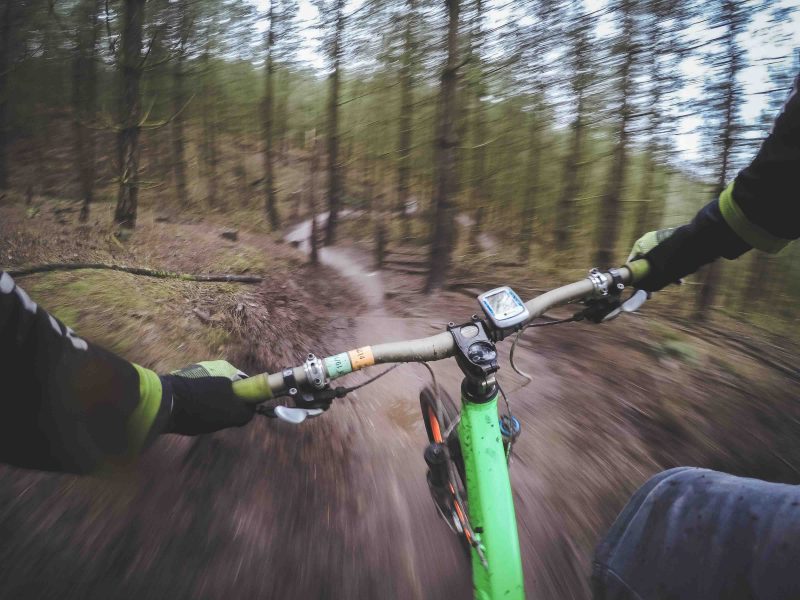
Rather than using two or more fingers to squeeze your brake levers, try to get in the habit of using just one. This allows you to grab your handlebars with all 4 remaining fingers, giving you the most secure grip possible. If you find it difficult to squeeze the brake lever with just one finger, try adjusting the position of the brake lever so your finger rests farther out on the lever, as this will allow you to generate more braking force with just one finger.
2. Use the front brake
Many people are taught to never use the front brake when mountain biking, for fear that they’ll stop the front wheel dead in its tracks and flip over the handlebars. In reality, your front brake is far more effective at slowing you down than your rear brake, and you should learn how to use it to your advantage on all types of terrain.
When you use your back brake, you have a tendency to lose traction and skid, which can lead to an out of control crash. If you learn to use your front brake, on the other hand, your weight will shift forward over the front tire as you slow down, increasing your traction and stopping power, and helping you slow down far more effectively. It’s unlikely you’ll flip over the handlebars by using your front brake, just make sure to get a feel for how much braking force is necessary to slow you down before trying it out on the trail.
3. Look ahead and plan your line
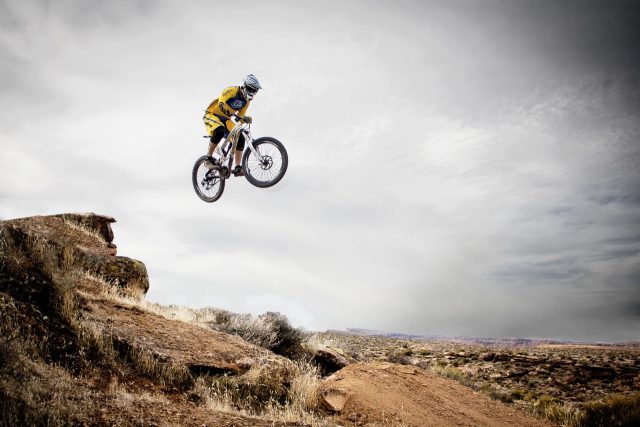
Beginner and expert riders alike need to constantly remind themselves to look up ahead of them, and not down at their front tire. It’s a tough habit to get the hang of, especially on rock and root strewn trails where you’re constantly afraid of crashing into obstacles.
In reality, it’s far faster and even safer, to look well up the trail, and plan your riding line in your head before you get there. It allows you to avoid small obstacles ahead of time, keep your speed up by choosing the path of least resistance, and gives you more time to react to a large unavoidable obstacle like a fallen log.
4. Ride the smoothest path through corners
One of the best ways to increase your speed on the trail is to learn how to identify and ride through the fastest path of a corner. When you approach a corner, start from the outside edge, and as you enter the corner cut as close to the inside edge as possible before drifting once again to the outside edge as you exit. This path allows you to essentially decrease the angle of the corner, and you’ll find that you can take tight corners much faster than if you ride the corner straight from the middle of the trail.
5. Brake before corners
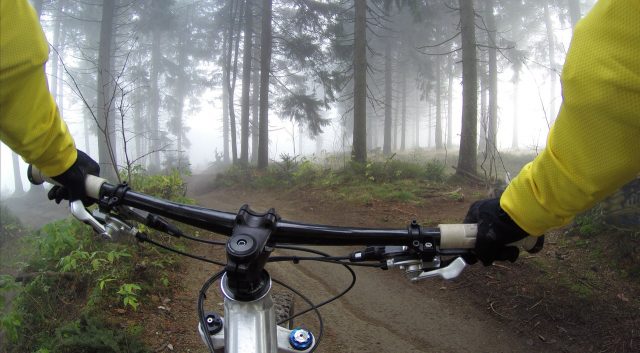
Most riders have a tendency to fly into the start of corners, brake heavily, and then practically crawl out the exit of the corner. The best practice is to brake well before you enter the corner, and ride through the corner without using your brakes at all. This is because you sacrifice a lot of traction if you ride your brakes through the start of the corner, which limits how fast you can really go without sliding out. If you can learn to judge how much to slow down before entering the corner, you can maximize the traction available for your tires and carve through corners faster than you ever thought was possible.
6. Use proper pedal positioning
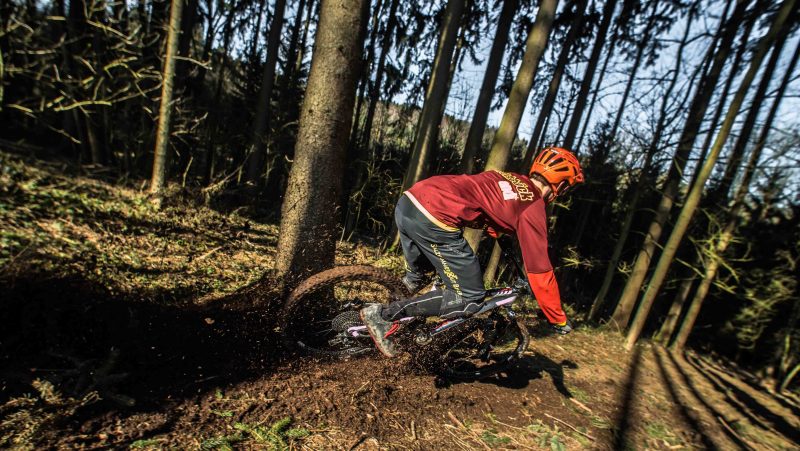
Did you know that there are specific positions to put your pedals depending on the terrain you’re riding through? If you’re riding on a section of trail with lots of high rocks and roots, it will help to stand up, bend your knees, and keep your pedals flat, parallel with the ground. This accomplishes two things. First, you’ve given yourself more ground clearance, so you won’t bash your pedals on rocks and roots as you ride over them. Secondly, this position gives you good agility and control, so you can quickly change your path and weave your way through “rock gardens”.
Now when you’re cornering, you want to drop the pedal on the outside of the corner and push into it as you lean. This drives your weight through the bike to the tires, increasing traction, and putting your body in a good position to lean the bike into the corner and ride through it as fast as possible.
7. Learn how to unweight each wheel
An advanced bike handling technique that can have a massive impact on your riding skill is the ability to unweight your tires. This skill is used when riding over larger obstacles like rocks and logs, and enables you to get over them more smoothly, and as a result, more quickly.
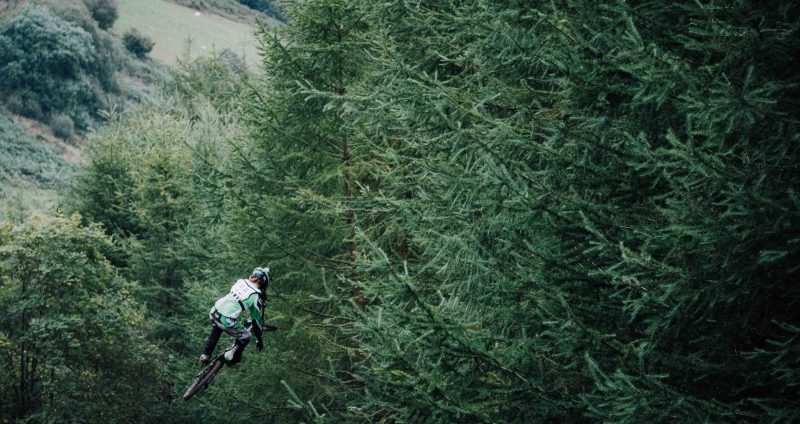
When you approach a large obstacle, lean back, and get your weight over the rear tire. This unweights the front tire, and allows it to roll effortlessly over the obstacle. Once your front tire is well onto the obstacle, shift your weight forward, lean towards the front tire, and unweight the rear tire as it too rolls over the obstacle. By unweighting the wheel that’s rolling up onto the obstacle, you allow it to roll much easier than if you had your weight over it.
This is a skill that takes some time to master, but it’s really easy to practice. Just find any flat surface and practice shifting your weight to the back, to unweight the front wheel, and to the front, to unweight your back wheel. You’ll know you’re doing it right if you can lean your body enough each direction to slightly lift each wheel of the ground.
If you have any comments then please drop us a message on our Outdoor Revival Facebook page
If you have a good story to tell or blog let us know about it on our FB page, we’re also happy for article or review submissions, we’d love to hear from you.
We live in a beautiful world, get out there and enjoy it. Outdoor Revival – Reconnecting us all with the Outdoor





